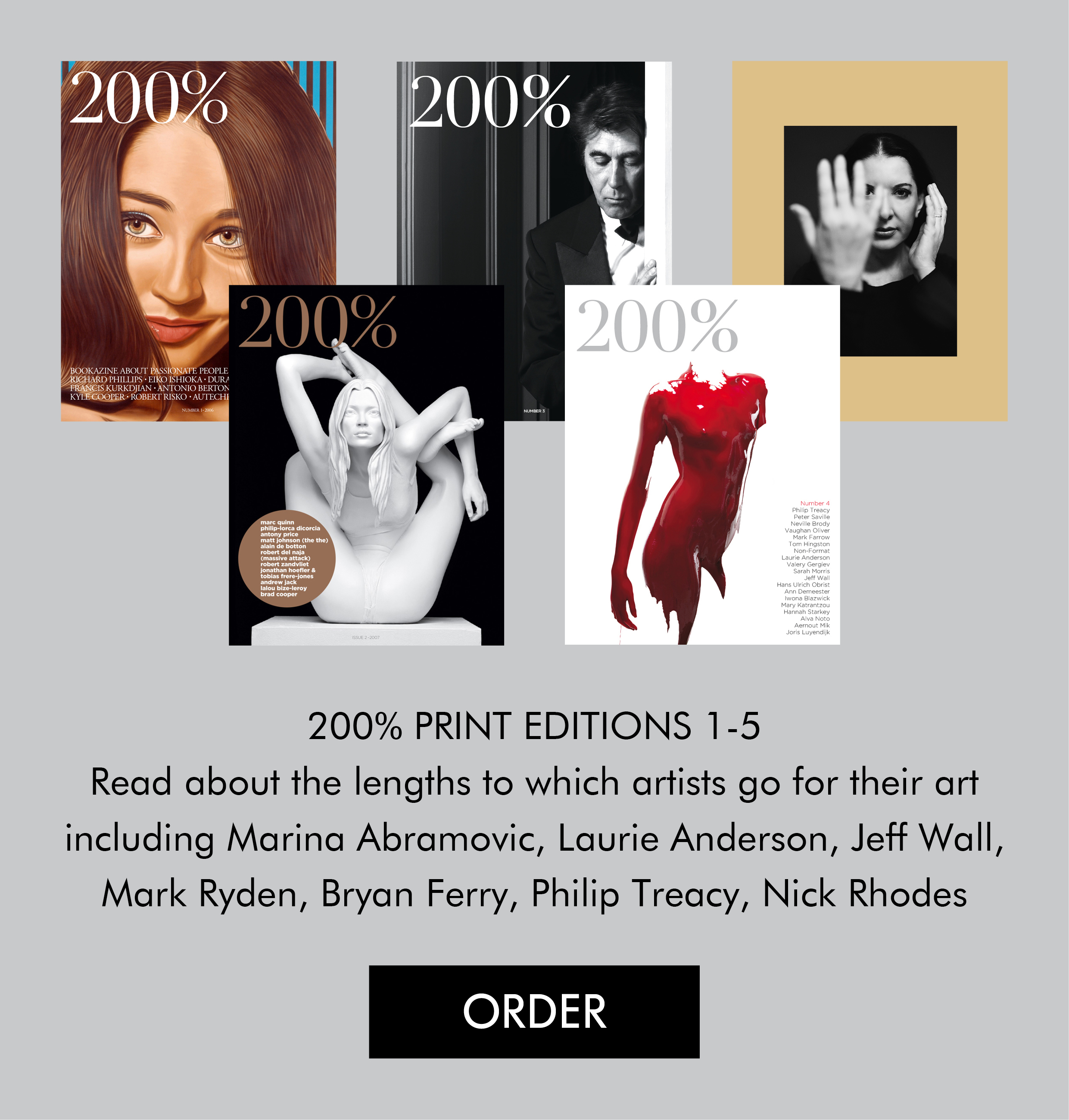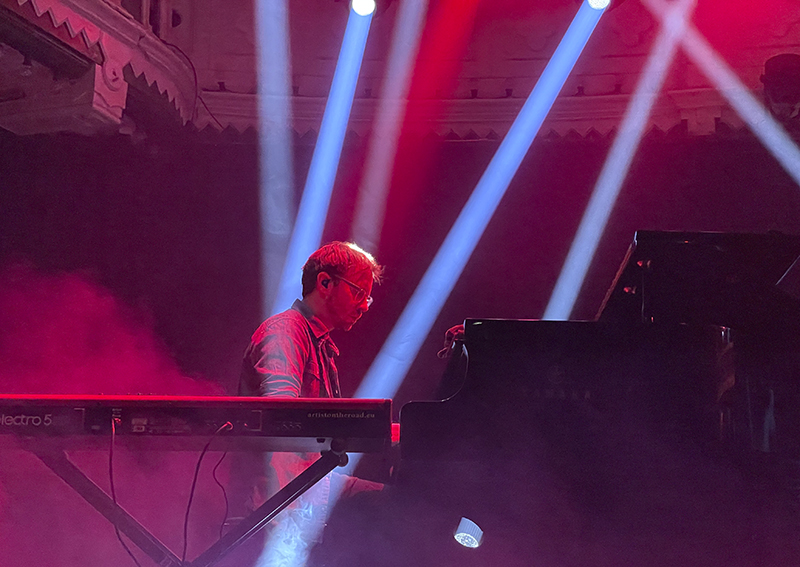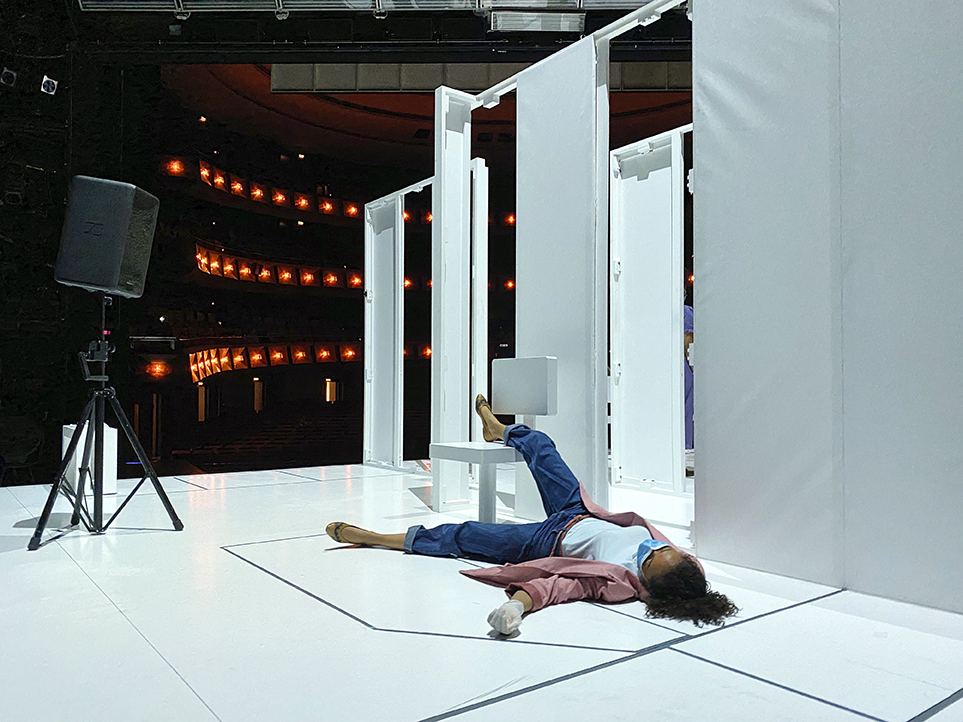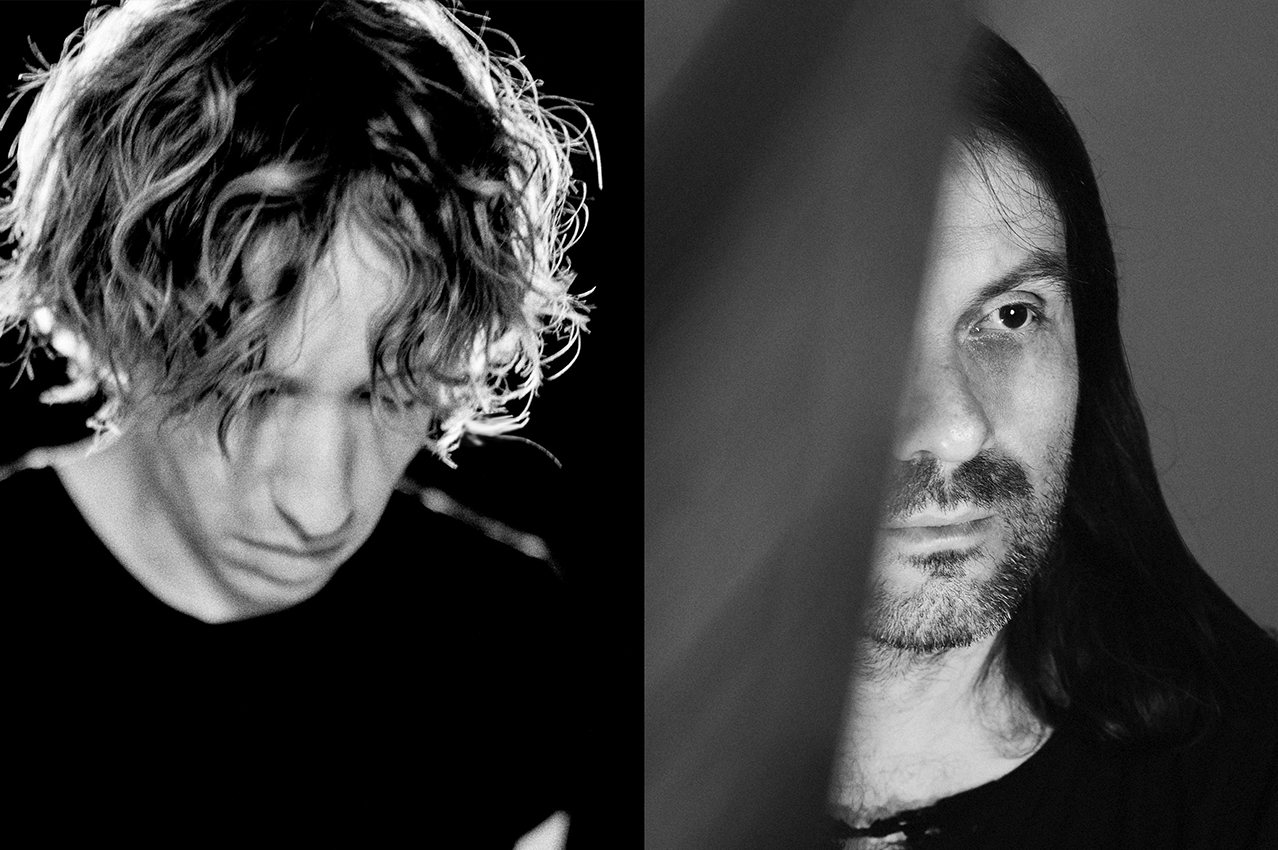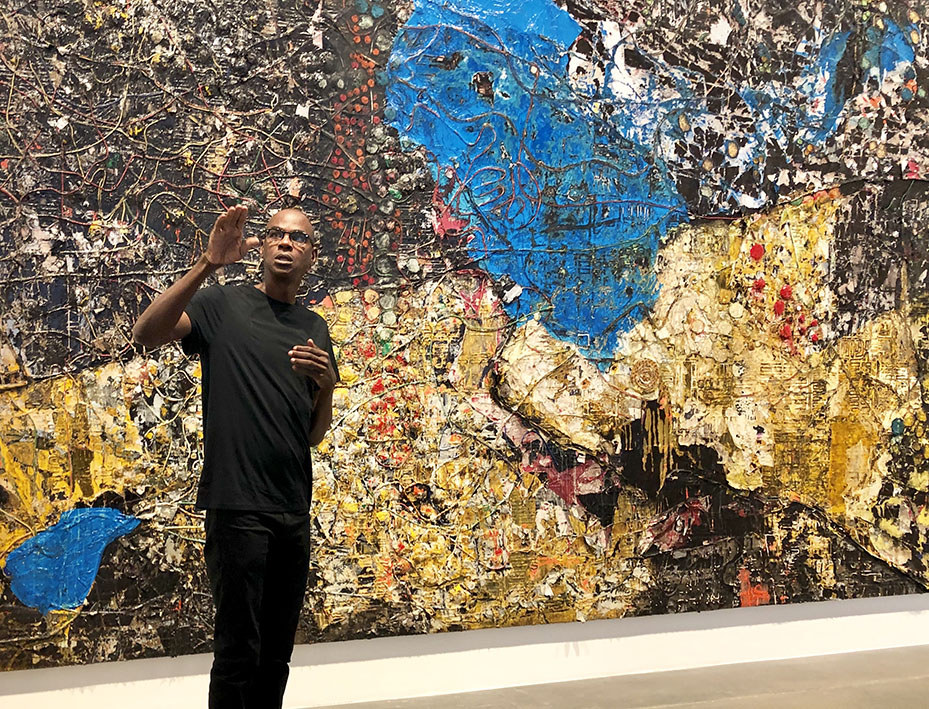 The second part of our ‘Dragon Tattoo Interview Trilogy’ features Atticus Ross, who composed, together with Trent Reznor, the dark, subversive and ominous soundtrack to the film.
The moment the electrifying opening credits of ‘The Girl with the Dragon Tattoo’ start you’re completely glued to the wide screen. The jet black images are accompanied by an electronic, pulsating cover version of Led Zeppelin’s ‘Immigrant Song’, full of fury and aggression. The venom in the Yeah Yeah Yeah’s Karen O’s voice personifies the rage and adrenalin boiling in Lisbeth Salander, the heroine of the film who is plagued by the authorities.
Ross and Reznor have experience of breathing new life into classic songs, having done so previously with their up-tempo cover version of Edvard Grieg’s ‘In the Hall of the Mountain King’ in ‘The Social Network’, the score for which they were awarded the Oscar for Best Original Soundtrack in 2011.
The subject matter of Stieg Larsson’s novels is right up Ross and Reznor’s alley: the latter is the front man of Nine Inch Nails – an industrial rock band whose sound has been described as “spectral pianos passing through icy and brittle electronics and brushing up against corrosive electric guitars”. This sound was present in ‘The Social Network’ and with ‘The Girl with the Dragon Tattoo’ they have taken it further into a dark and haunting place.
The compositions on the soundtrack – a 3 piece CD album, spread out over three hours – leads you into a dark and nightmarish journey as though you were on the river Styx entering Hades’s domain (‘Another Way of Caring’) or faced with the horror of the dungeon in Edgar Allen Poe’s ‘The Pit and the Pendulum’.
The music varies from industrial underground (‘Cut Into Pieces’), to gloomy Eric Satie piano chords (‘Parallel Timeline with Alternate Outcome’), then onto gothic lounge (‘People Lie all the Time’). Ross and Reznor’s long journey into the night – when judged as such – seems to be an ode to their musical heroes, including Coil and David Bowie, in particular, the album ‘Low’.
Although some of the tracks are nerve wrecking and alienating (‘Infiltrator’) they remain melodic and, therefore, approachable. ‘An Itch’ masterly captures, in sound, the double feeling of hacking someone’s computer, which is exciting and thrilling on one side, but naughty and illegal on the other side. The intriguing and tantalizing ‘Oraculum’ sums up Ross and Reznor’s idea of a soundtrack: it’s a mesmerizing tune, with carefully crafted string touches, that ends on a mysterious note.
Some of the tracks are introspective with sparse and delicately played piano chords (‘Under the Midnight Sun’) reminiscent of Harold Budd’s ethereal ambient music. ‘She Reminds me of You’ conjures up a sonic landscape with a melody of bells that sounds deceptively friendly.
Bells are the musical leitmotif of the film. In the early discussions with Ross and Reznor, the film’s director David Fincher, mentioned Mike Oldfield’s ‘Tubular Bells’ as a musical reference point. “We began with the notion of how do you convey the sound of ice, the sound of coldness”, Fincher explained on the Charlie Rose show. “We decided to do that with bells, that could be a voice from the past”.
Bells are also associated with a deathknoll feeling: an instrument that can capture the mysterious disappearance of Harriet Vanger in the film – is she alive or is she buried beneath the snow?
In this interview we spoke with Atticus Ross about working with David Fincher, his favourite part of the soundtrack, the creative division of roles between him and Reznor, and the hardest thing in the world: “to take a classic song [Immigrant Song’], which everyone loves, and not fuck it up”.
The second part of our ‘Dragon Tattoo Interview Trilogy’ features Atticus Ross, who composed, together with Trent Reznor, the dark, subversive and ominous soundtrack to the film.
The moment the electrifying opening credits of ‘The Girl with the Dragon Tattoo’ start you’re completely glued to the wide screen. The jet black images are accompanied by an electronic, pulsating cover version of Led Zeppelin’s ‘Immigrant Song’, full of fury and aggression. The venom in the Yeah Yeah Yeah’s Karen O’s voice personifies the rage and adrenalin boiling in Lisbeth Salander, the heroine of the film who is plagued by the authorities.
Ross and Reznor have experience of breathing new life into classic songs, having done so previously with their up-tempo cover version of Edvard Grieg’s ‘In the Hall of the Mountain King’ in ‘The Social Network’, the score for which they were awarded the Oscar for Best Original Soundtrack in 2011.
The subject matter of Stieg Larsson’s novels is right up Ross and Reznor’s alley: the latter is the front man of Nine Inch Nails – an industrial rock band whose sound has been described as “spectral pianos passing through icy and brittle electronics and brushing up against corrosive electric guitars”. This sound was present in ‘The Social Network’ and with ‘The Girl with the Dragon Tattoo’ they have taken it further into a dark and haunting place.
The compositions on the soundtrack – a 3 piece CD album, spread out over three hours – leads you into a dark and nightmarish journey as though you were on the river Styx entering Hades’s domain (‘Another Way of Caring’) or faced with the horror of the dungeon in Edgar Allen Poe’s ‘The Pit and the Pendulum’.
The music varies from industrial underground (‘Cut Into Pieces’), to gloomy Eric Satie piano chords (‘Parallel Timeline with Alternate Outcome’), then onto gothic lounge (‘People Lie all the Time’). Ross and Reznor’s long journey into the night – when judged as such – seems to be an ode to their musical heroes, including Coil and David Bowie, in particular, the album ‘Low’.
Although some of the tracks are nerve wrecking and alienating (‘Infiltrator’) they remain melodic and, therefore, approachable. ‘An Itch’ masterly captures, in sound, the double feeling of hacking someone’s computer, which is exciting and thrilling on one side, but naughty and illegal on the other side. The intriguing and tantalizing ‘Oraculum’ sums up Ross and Reznor’s idea of a soundtrack: it’s a mesmerizing tune, with carefully crafted string touches, that ends on a mysterious note.
Some of the tracks are introspective with sparse and delicately played piano chords (‘Under the Midnight Sun’) reminiscent of Harold Budd’s ethereal ambient music. ‘She Reminds me of You’ conjures up a sonic landscape with a melody of bells that sounds deceptively friendly.
Bells are the musical leitmotif of the film. In the early discussions with Ross and Reznor, the film’s director David Fincher, mentioned Mike Oldfield’s ‘Tubular Bells’ as a musical reference point. “We began with the notion of how do you convey the sound of ice, the sound of coldness”, Fincher explained on the Charlie Rose show. “We decided to do that with bells, that could be a voice from the past”.
Bells are also associated with a deathknoll feeling: an instrument that can capture the mysterious disappearance of Harriet Vanger in the film – is she alive or is she buried beneath the snow?
In this interview we spoke with Atticus Ross about working with David Fincher, his favourite part of the soundtrack, the creative division of roles between him and Reznor, and the hardest thing in the world: “to take a classic song [Immigrant Song’], which everyone loves, and not fuck it up”.
 200%: This is the second time you’ve scored a soundtrack for a David Fincher film. Could you tell me something about the experience?
AR: We had an amazing time working on ‘The Social Network’. It was really a great learning experience especially in terms of working with David; he is an artist, and the team around him are all at the top of their game. After ‘The Social Network’, David asked us if we were interested in scoring the soundtrack of ‘The Girl with the Dragon Tattoo’ and we said “of course”, and we were rolling straight into that film. In our first meetings with David he spoke about Lisbeth’s character, her background, and as a musical reference point, he mentioned Mike Oldfield’s ‘Tubular Bells’ as he wanted the score to have a ‘cold’ atmosphere.
We read the book, and started thinking about musical ideas. Although the story of ‘The Girl with the Dragon Tattoo’ is completely different from the ‘The Social Network’, what the films have in common is the incredible amount of information being passed. There is a lot of technical information and dialogue happening, so you can’t compose meditative landscape music.
Trent and I are both interested in the nature of sound and its textural aspect. Thus, in the vein of ‘Tubular Bells’ we came up with ideas of sounds created by stretched-out bell tones, and also piano beds filled with nails and clothespins, a bit John Cage inspired. By employing this methodology we achieved different notes, different melodies, whereby the scale was not always correct, but that added an abundance of layers and textures to the score. What we found is that the sparse piano and the stretched out bell tones worked well with the detective part of the story and the textural stuff worked well in an urban setting.
200%: Do you have a favourite musical part of the film?
AR: Yes, the Nils Bjurman sequence. After the scene when Lisbeth has giving Bjurman a blow job in his office, she steps into the hall way and you hear the sound of a floor cleaner. What we did, in collaboration with the sound designer, Ren Klyce, we tuned the sound of the floor cleaner in the same key as the music so it doesn’t become clear where one starts and the other ends as they are almost one and the same thing: this connects with elements of everyday life and, therefore, becomes part of the texture of the music.
200%: How is the creative division of roles between you and Trent?
AR: Broadly speaking Trent is more playing and I’m more programming – we try to keep the initial creative process as right-sided brain wise as possible. Lots of ideas and recording generally are centered around a particular key, progression and tempo. We work fast, going back and forth between us, to build up the tracks. For both ‘The Social Network’ and ‘Dragon Tattoo’ the initial writing sessions were based around ideas born from reading the script. Once we get pictures [of the film] it becomes more left sided – figuring out the best use of those ideas.
I personally feel like the last few years for me, it’s been a highlight of my creative life for whatever reason and whatever has happened, it happened in a place where we were worked very close, for quite a sustained amount of time. We started at the beginning of 2010 with ‘The Social Network’ and we didn’t leave the garage [the studio] until at the end of last year. During that time we worked very hard, wherein we produced an astonishing amount of material and an astonishing amount of focus on that material. And in the same period we also did a new ‘How To Destroy Angels’ album, which is nearly finished.
200%: This is the second time you’ve scored a soundtrack for a David Fincher film. Could you tell me something about the experience?
AR: We had an amazing time working on ‘The Social Network’. It was really a great learning experience especially in terms of working with David; he is an artist, and the team around him are all at the top of their game. After ‘The Social Network’, David asked us if we were interested in scoring the soundtrack of ‘The Girl with the Dragon Tattoo’ and we said “of course”, and we were rolling straight into that film. In our first meetings with David he spoke about Lisbeth’s character, her background, and as a musical reference point, he mentioned Mike Oldfield’s ‘Tubular Bells’ as he wanted the score to have a ‘cold’ atmosphere.
We read the book, and started thinking about musical ideas. Although the story of ‘The Girl with the Dragon Tattoo’ is completely different from the ‘The Social Network’, what the films have in common is the incredible amount of information being passed. There is a lot of technical information and dialogue happening, so you can’t compose meditative landscape music.
Trent and I are both interested in the nature of sound and its textural aspect. Thus, in the vein of ‘Tubular Bells’ we came up with ideas of sounds created by stretched-out bell tones, and also piano beds filled with nails and clothespins, a bit John Cage inspired. By employing this methodology we achieved different notes, different melodies, whereby the scale was not always correct, but that added an abundance of layers and textures to the score. What we found is that the sparse piano and the stretched out bell tones worked well with the detective part of the story and the textural stuff worked well in an urban setting.
200%: Do you have a favourite musical part of the film?
AR: Yes, the Nils Bjurman sequence. After the scene when Lisbeth has giving Bjurman a blow job in his office, she steps into the hall way and you hear the sound of a floor cleaner. What we did, in collaboration with the sound designer, Ren Klyce, we tuned the sound of the floor cleaner in the same key as the music so it doesn’t become clear where one starts and the other ends as they are almost one and the same thing: this connects with elements of everyday life and, therefore, becomes part of the texture of the music.
200%: How is the creative division of roles between you and Trent?
AR: Broadly speaking Trent is more playing and I’m more programming – we try to keep the initial creative process as right-sided brain wise as possible. Lots of ideas and recording generally are centered around a particular key, progression and tempo. We work fast, going back and forth between us, to build up the tracks. For both ‘The Social Network’ and ‘Dragon Tattoo’ the initial writing sessions were based around ideas born from reading the script. Once we get pictures [of the film] it becomes more left sided – figuring out the best use of those ideas.
I personally feel like the last few years for me, it’s been a highlight of my creative life for whatever reason and whatever has happened, it happened in a place where we were worked very close, for quite a sustained amount of time. We started at the beginning of 2010 with ‘The Social Network’ and we didn’t leave the garage [the studio] until at the end of last year. During that time we worked very hard, wherein we produced an astonishing amount of material and an astonishing amount of focus on that material. And in the same period we also did a new ‘How To Destroy Angels’ album, which is nearly finished.
 To chose Led Zeppelin’s ‘Immigrant Song’ for the opening credits of ‘The Girl with the Dragon Tattoo’ is a stroke of genius as it makes reference to the subject matter of the film on a conscious and subconscious level. The electronic cover version of the song relates to Salander who is a top-notch computer hacker and a wizard in technology.
Robert Plant and Jimmy Page wrote the lyrics inspired by a Led Zeppelin trip to Iceland to play a concert in Reykjavik: “We come from the land of the ice and snow, from the midnight sun, where the hot springs flow”. The ice and snow element resembles the Swedish climate and landscape where the story takes place. Ice and snow can be viewed as polar extremities, comparable with the main characters of the film, Lisbeth Salander and Mikael Blomkvist who are polar opposites in terms of their character.
“Our only goal will be the western shore” refers to the Viking warriors preparing for battle with Salander can be seen as a female warrior who fights the authorities for justice to be done. Although, unintended, when Led Zeppelin wrote the song, the ‘Immigrant’ part of the title coalesces with Stieg Larsson’s concern for the abuse of women and immigrants that occurs in Swedish society. In the torture scene, Martin Vanger, explains to Blomkvist that he kills ‘immigrant’ women, such as Russian whores, who pass through Sweden, as they won’t be missed.
Led Zeppelin are renowned for their sexual metaphors in their lyrics, which can be related to Salander, who is sexual very active. In the line “We’ll drive our ships to new lands”, the word ‘ships’, refers to the penis and ‘new lands’ refers to women that have to be ‘sexually’ conquered. In ‘The Girl with the Dragon Tattoo’, the roles are reversed as it is the woman, not the man, who is the sexual conqueror. Salander has had more than 50 sexual partners, male and female, and goes to ‘new lands’ as she takes the initiative to sleep with Blomkvist.
200%: Who came up with the idea to select Led Zeppelin’s ‘Immigrant Song’ and Bryan Ferry’s ‘Is Your Love Strong Enough’?
AR: They were both David Fincher’s idea. When we first heard about the ‘Immigrant Song’ it’s one of those things where you’re like Oh My God. The hardest thing in the world is to take a classic song, which everyone loves, and not fuck it up. David had said very early: I got this idea of ‘Immigrant Song’ and I want it to be intense and electronic. In the beginning we were hesitant for the obvious reasons but David kept coming back with the song. The thing with David is he’ll be telling you something in the early process of the film and he’s already envisioned the vocal delivery and how it ties into the core of Lisbeth’s character, the trailer that was built around it and the title sequence of the film. Karen O’ of the Yeah Yeah Yeah’s immediately came to mind for ‘Immigrant Song’ and she delivered a stellar performance as did Mariqueen Maandig on ‘Is your Love Strong Enough’.
Funnily enough, it was the same with our version of Edvard Grieg’s ‘In the Hall of the Mountain King’ in ‘The Social Network’ as it was the track that took us the longest to complete. Interpreting an existing classic is always a challenge but when you see how David uses them and you understand the scope of his vision, it’s worth every second.
To chose Led Zeppelin’s ‘Immigrant Song’ for the opening credits of ‘The Girl with the Dragon Tattoo’ is a stroke of genius as it makes reference to the subject matter of the film on a conscious and subconscious level. The electronic cover version of the song relates to Salander who is a top-notch computer hacker and a wizard in technology.
Robert Plant and Jimmy Page wrote the lyrics inspired by a Led Zeppelin trip to Iceland to play a concert in Reykjavik: “We come from the land of the ice and snow, from the midnight sun, where the hot springs flow”. The ice and snow element resembles the Swedish climate and landscape where the story takes place. Ice and snow can be viewed as polar extremities, comparable with the main characters of the film, Lisbeth Salander and Mikael Blomkvist who are polar opposites in terms of their character.
“Our only goal will be the western shore” refers to the Viking warriors preparing for battle with Salander can be seen as a female warrior who fights the authorities for justice to be done. Although, unintended, when Led Zeppelin wrote the song, the ‘Immigrant’ part of the title coalesces with Stieg Larsson’s concern for the abuse of women and immigrants that occurs in Swedish society. In the torture scene, Martin Vanger, explains to Blomkvist that he kills ‘immigrant’ women, such as Russian whores, who pass through Sweden, as they won’t be missed.
Led Zeppelin are renowned for their sexual metaphors in their lyrics, which can be related to Salander, who is sexual very active. In the line “We’ll drive our ships to new lands”, the word ‘ships’, refers to the penis and ‘new lands’ refers to women that have to be ‘sexually’ conquered. In ‘The Girl with the Dragon Tattoo’, the roles are reversed as it is the woman, not the man, who is the sexual conqueror. Salander has had more than 50 sexual partners, male and female, and goes to ‘new lands’ as she takes the initiative to sleep with Blomkvist.
200%: Who came up with the idea to select Led Zeppelin’s ‘Immigrant Song’ and Bryan Ferry’s ‘Is Your Love Strong Enough’?
AR: They were both David Fincher’s idea. When we first heard about the ‘Immigrant Song’ it’s one of those things where you’re like Oh My God. The hardest thing in the world is to take a classic song, which everyone loves, and not fuck it up. David had said very early: I got this idea of ‘Immigrant Song’ and I want it to be intense and electronic. In the beginning we were hesitant for the obvious reasons but David kept coming back with the song. The thing with David is he’ll be telling you something in the early process of the film and he’s already envisioned the vocal delivery and how it ties into the core of Lisbeth’s character, the trailer that was built around it and the title sequence of the film. Karen O’ of the Yeah Yeah Yeah’s immediately came to mind for ‘Immigrant Song’ and she delivered a stellar performance as did Mariqueen Maandig on ‘Is your Love Strong Enough’.
Funnily enough, it was the same with our version of Edvard Grieg’s ‘In the Hall of the Mountain King’ in ‘The Social Network’ as it was the track that took us the longest to complete. Interpreting an existing classic is always a challenge but when you see how David uses them and you understand the scope of his vision, it’s worth every second.
 BEWARE WHEN LISTENING TO THIS SOUNDTRACK WHEN LISTENING ON YOUR IPOD ON THE LONDON TUBE DURING RUSH HOURS: THE DISENGAGED, BORED EXPRESSIONS ON COMMUTERS’ FACES WILL MAKE YOU EVEN FEEL MORE UNNERVED AND NEUROTIC. OR, AN EVEN MORE DISTURBING IMAGE: STANDING ON AN EMPTY UNDERGROUND PLATFORM WAITING FOR THE LAST TUBE AND YOU SEE A RAT RUNNING ACROSS THE TRACKS.
Interview written and conducted by Thierry Somers with contribution from Marcel Harlaar.
Picture: Trent Reznor and Atticus Ross (right) in the studio
‘The Girl with the Dragon Tattoo’, Atticus Ross and Trent Reznor, www.Mute.com
BEWARE WHEN LISTENING TO THIS SOUNDTRACK WHEN LISTENING ON YOUR IPOD ON THE LONDON TUBE DURING RUSH HOURS: THE DISENGAGED, BORED EXPRESSIONS ON COMMUTERS’ FACES WILL MAKE YOU EVEN FEEL MORE UNNERVED AND NEUROTIC. OR, AN EVEN MORE DISTURBING IMAGE: STANDING ON AN EMPTY UNDERGROUND PLATFORM WAITING FOR THE LAST TUBE AND YOU SEE A RAT RUNNING ACROSS THE TRACKS.
Interview written and conducted by Thierry Somers with contribution from Marcel Harlaar.
Picture: Trent Reznor and Atticus Ross (right) in the studio
‘The Girl with the Dragon Tattoo’, Atticus Ross and Trent Reznor, www.Mute.com

